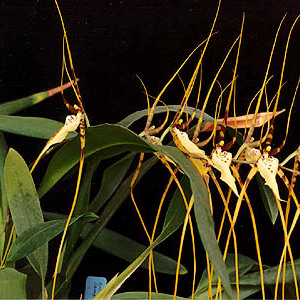Herbs, epiphytic, ± cespitose. Stems either reduced and covered with sheathing bracts or elongate with prominent, single-noded pseudobulb. Leaves 1(–2) per sympodium, from apex of pseudobulb, often with 1–3 short foliaceous bracts subtending single-noded pseudobulb; blade conduplicate, oblong-lanceolate, dorsiventrally flattened, margins entire. Inflorescences lateral, racemes; bracts narrowly triangular. Flowers: sepals and petals distinct and free, long, attenuate-caudate; lip unlobed; callus prominent, 2-lamellate; column without appendages, footless; stigmatic cavity ± round; rostellum not prominent. Fruits capsules.

